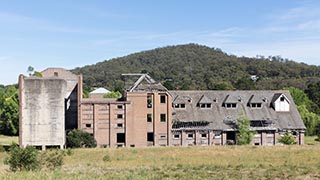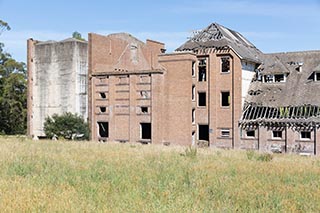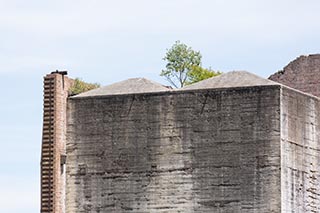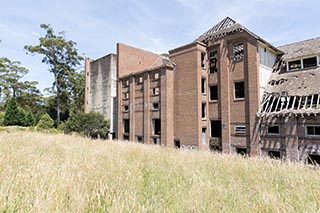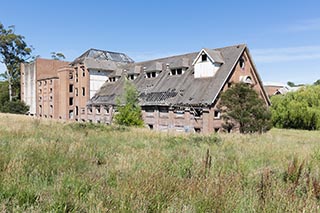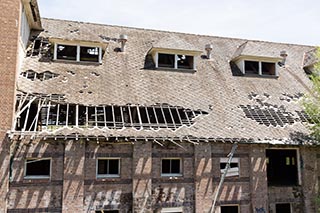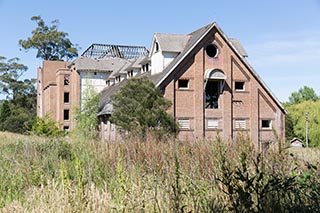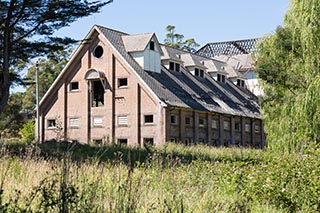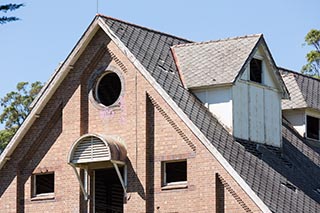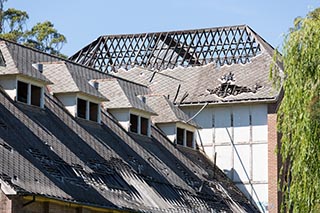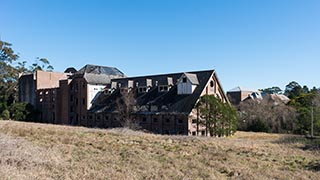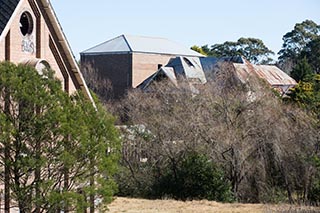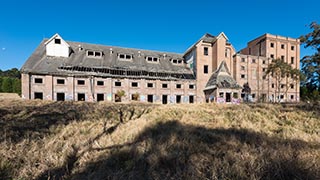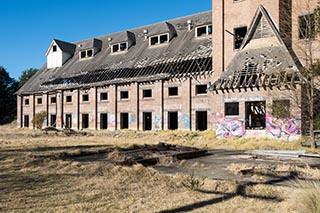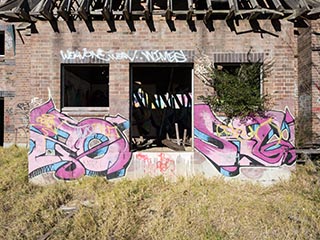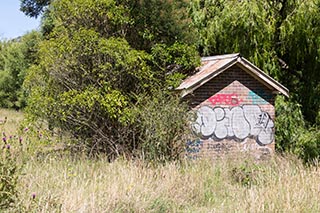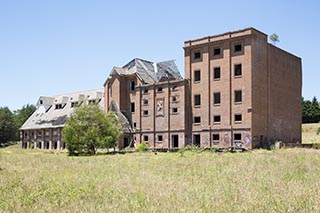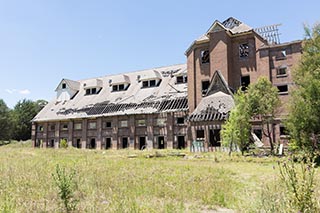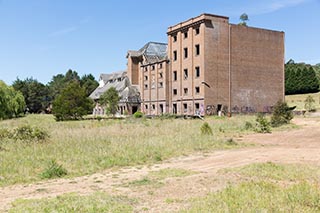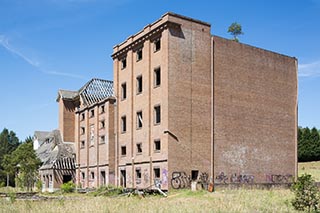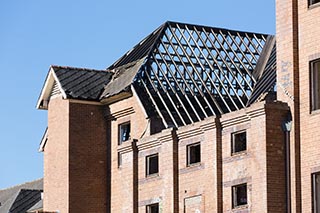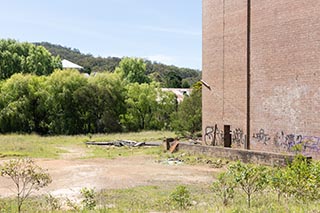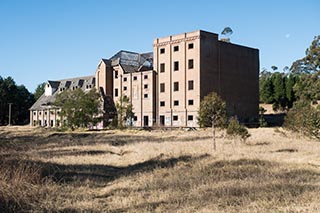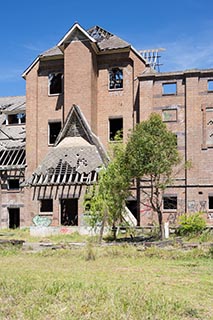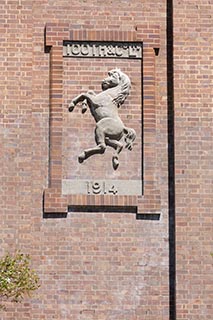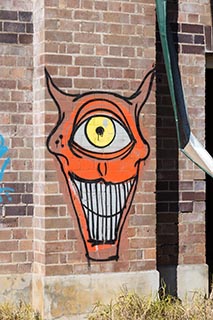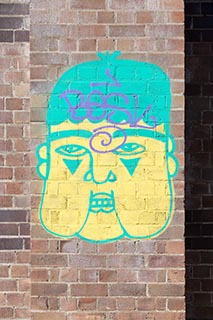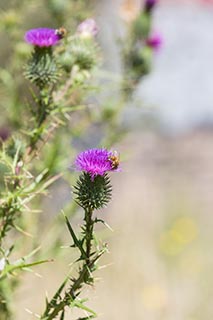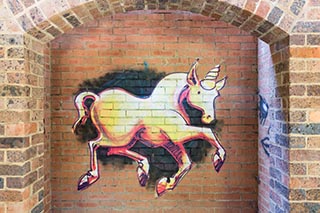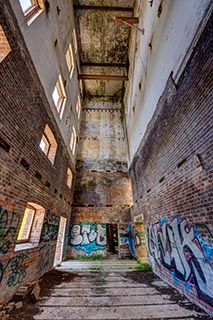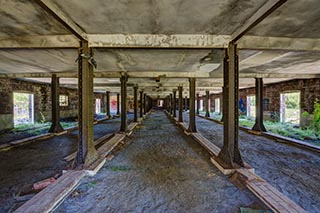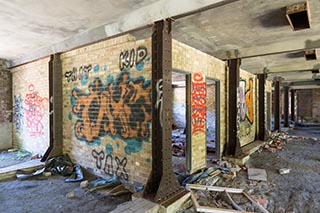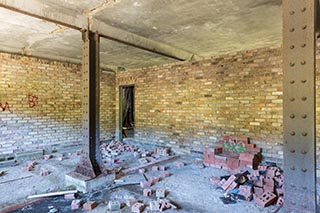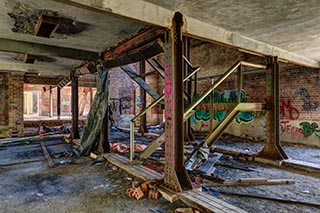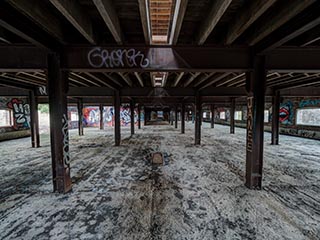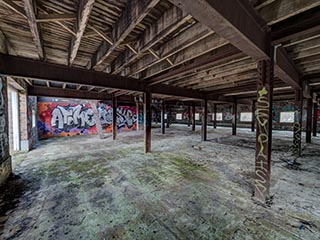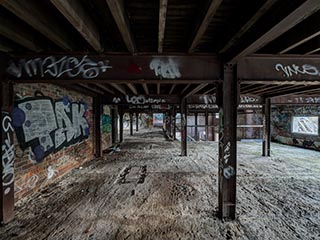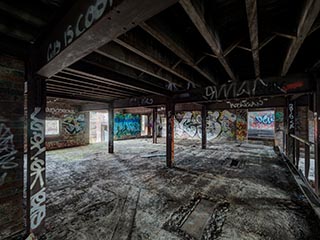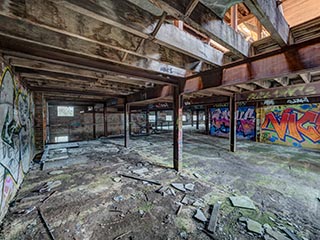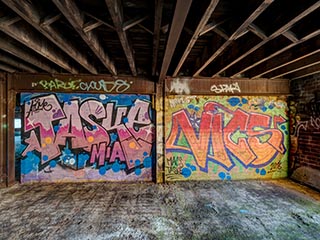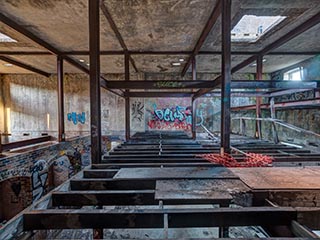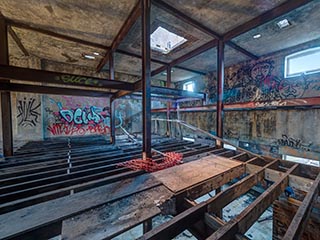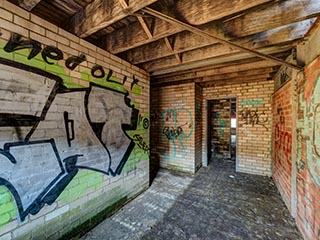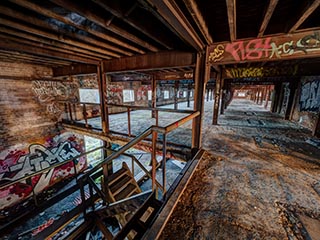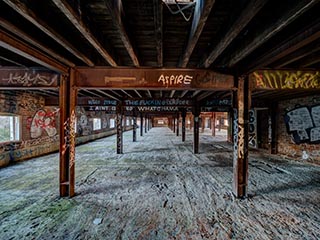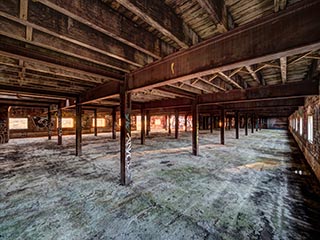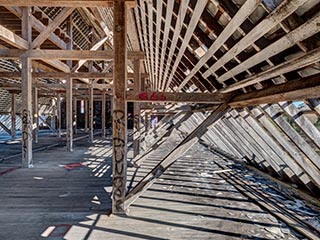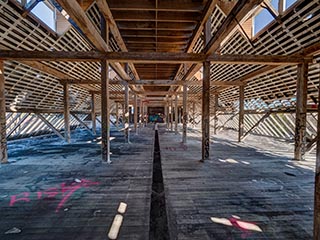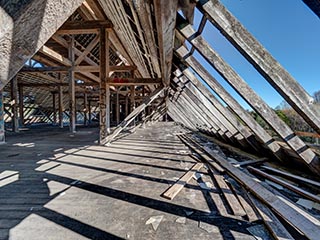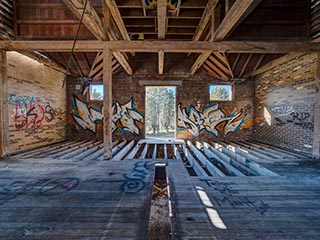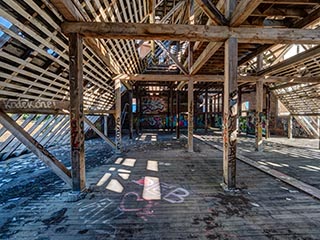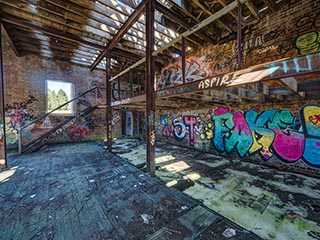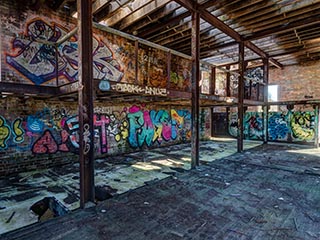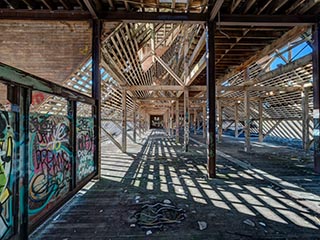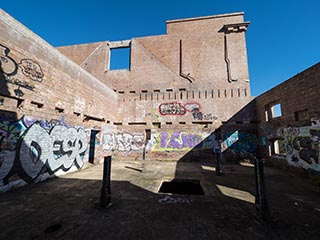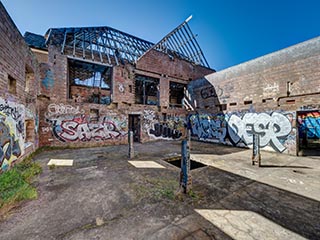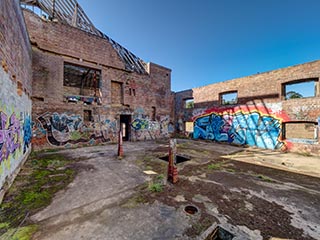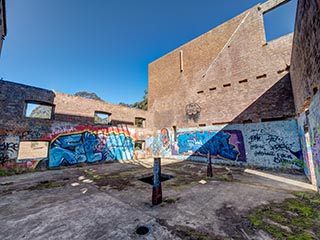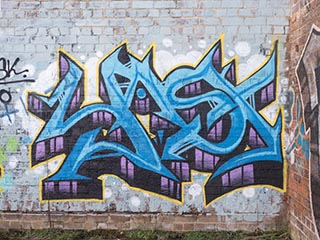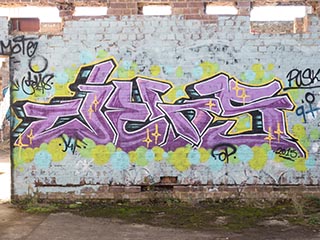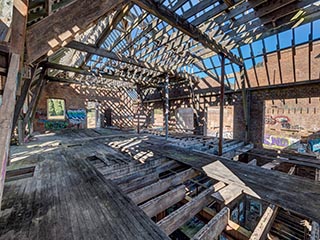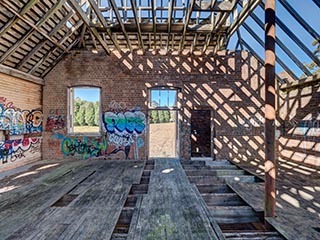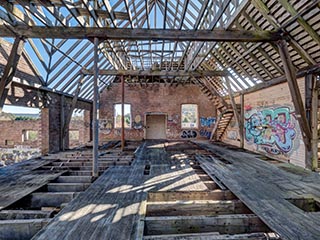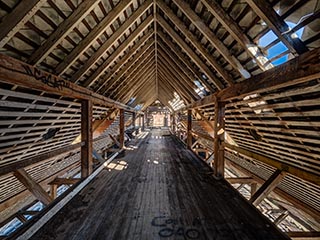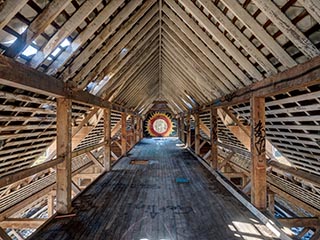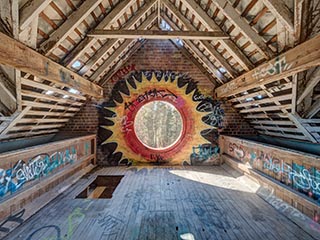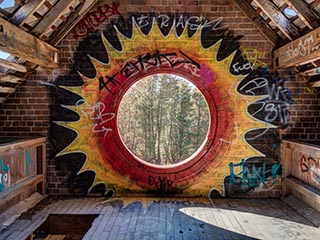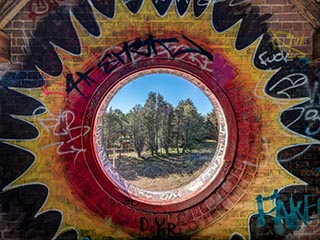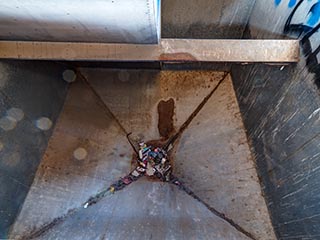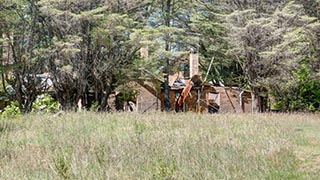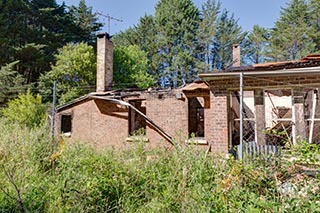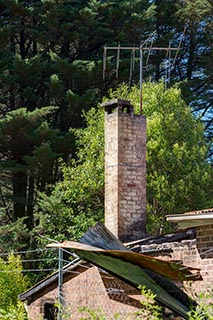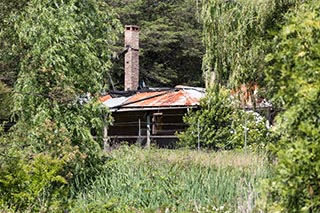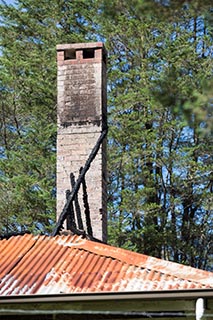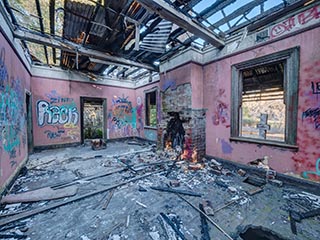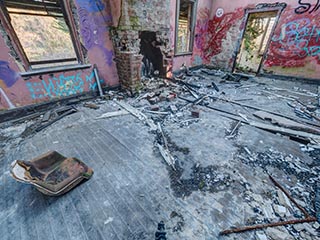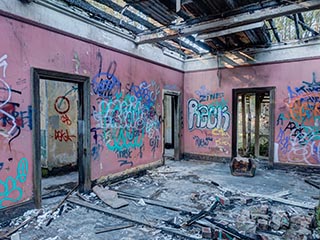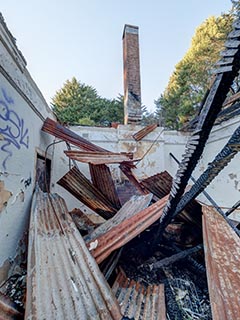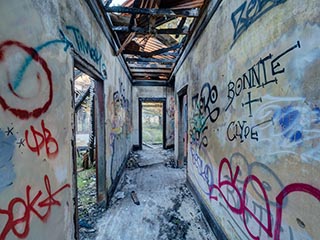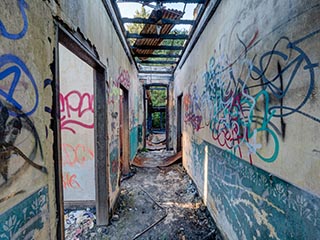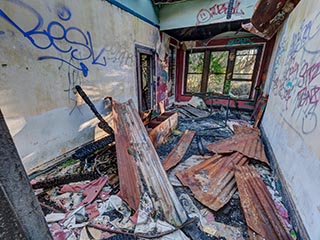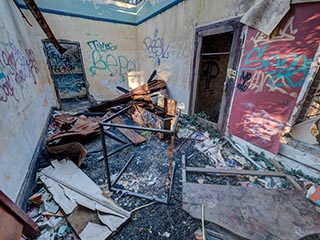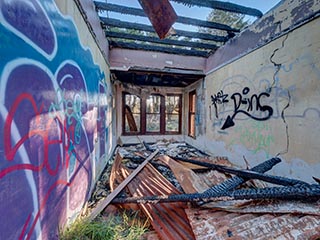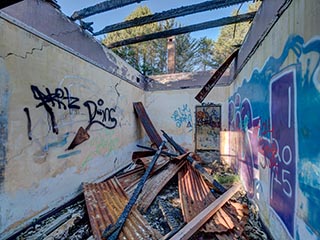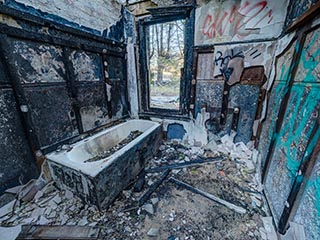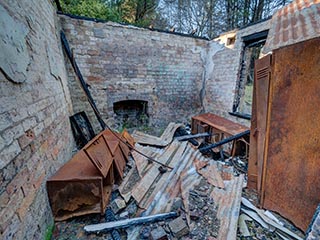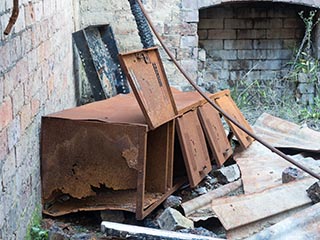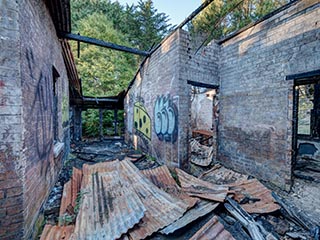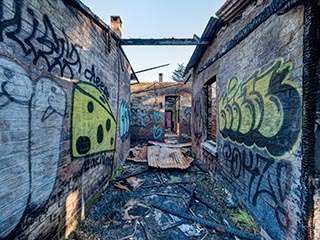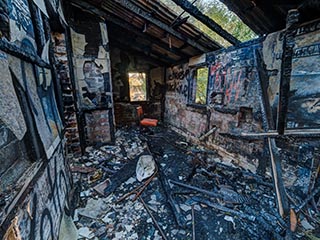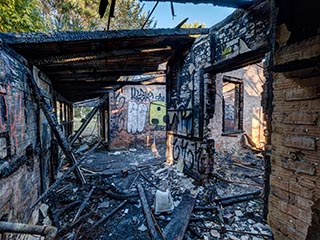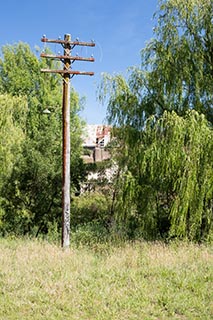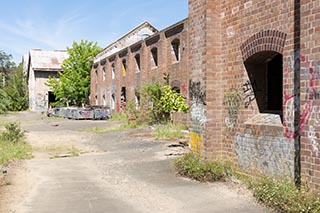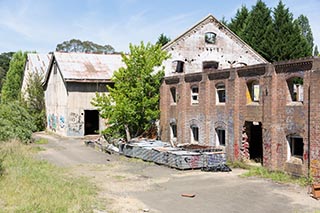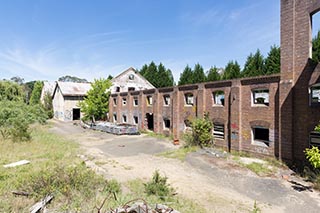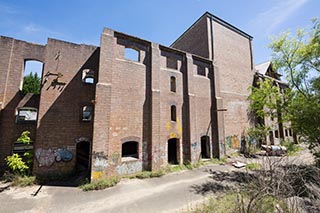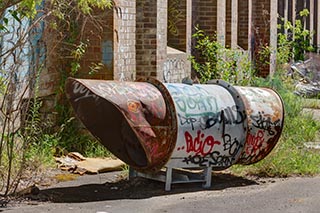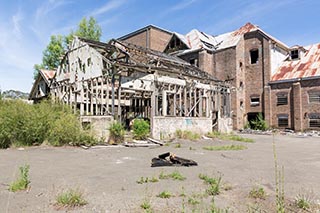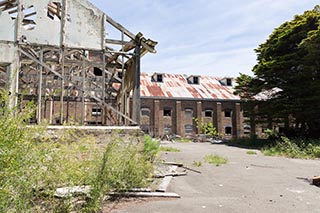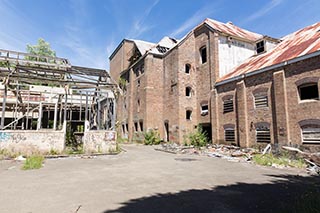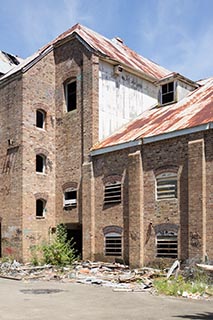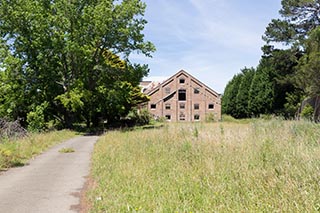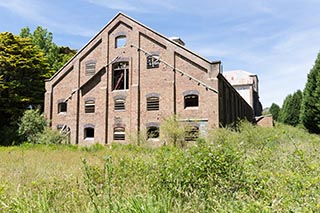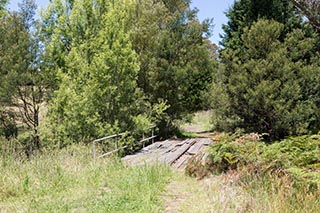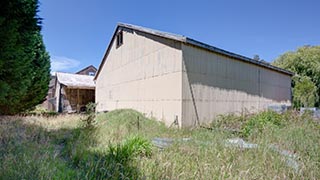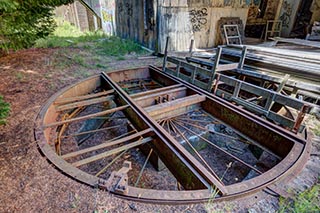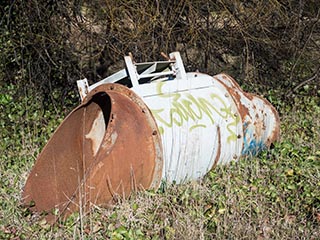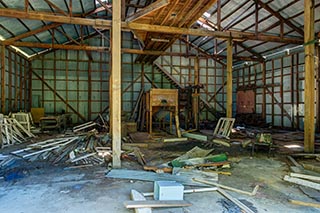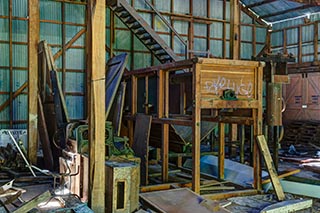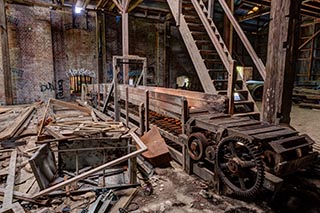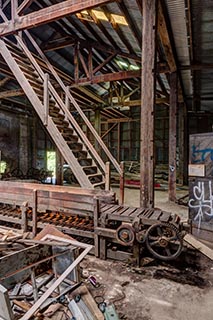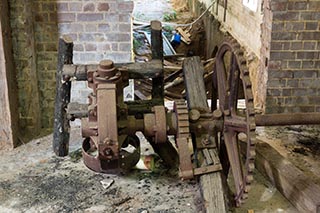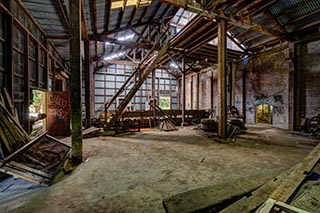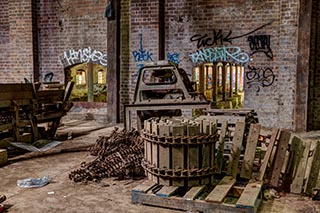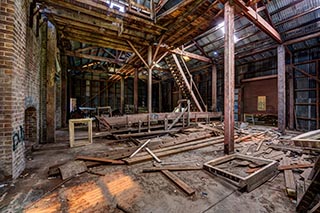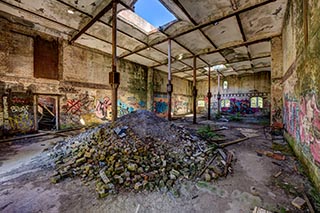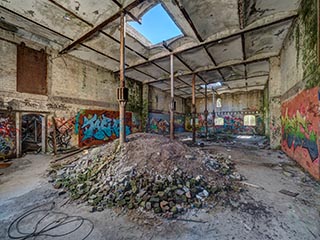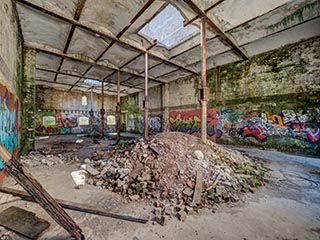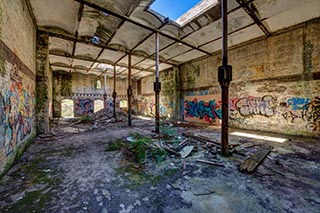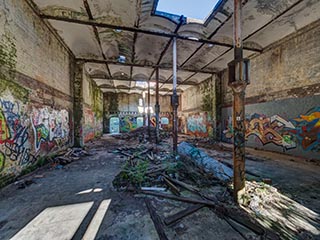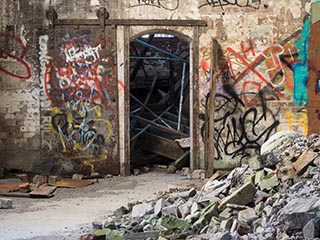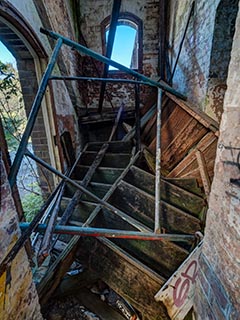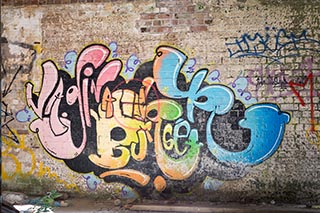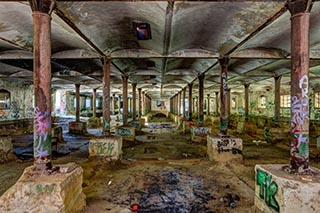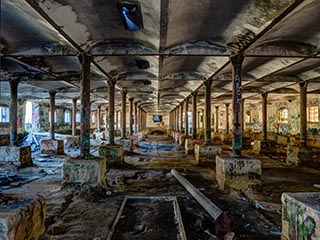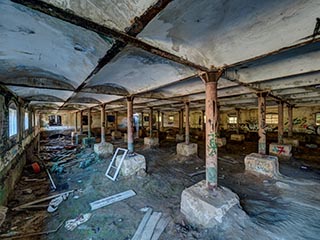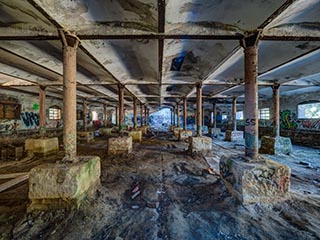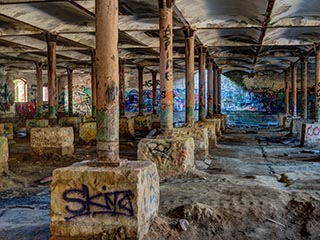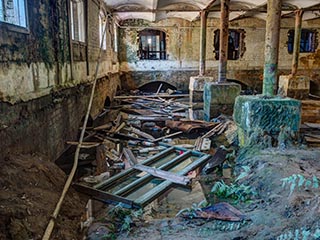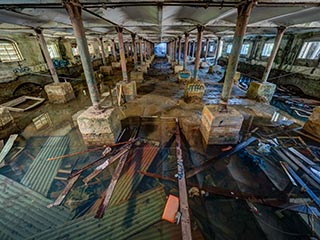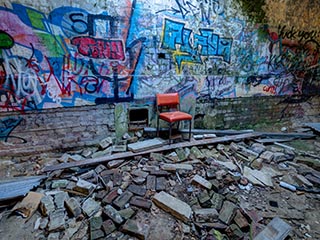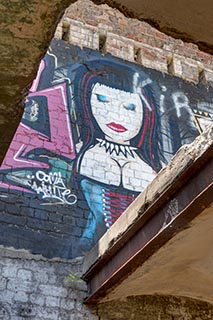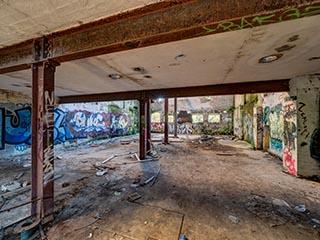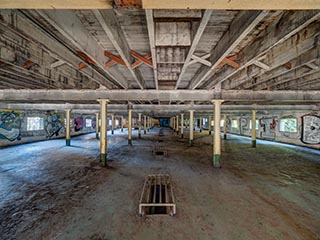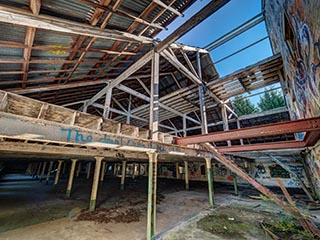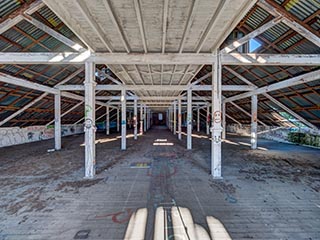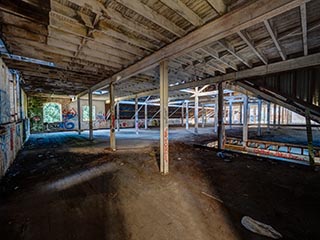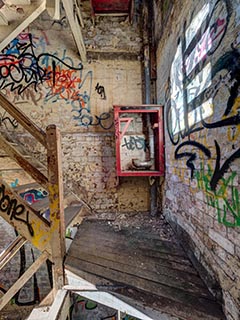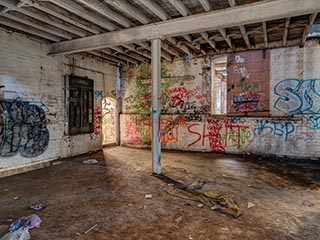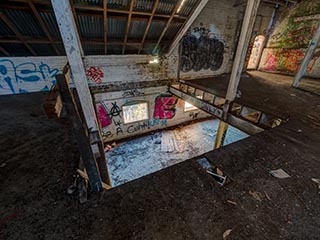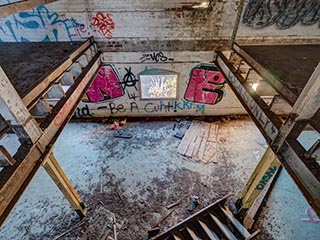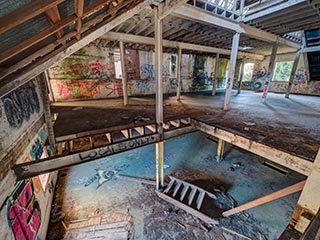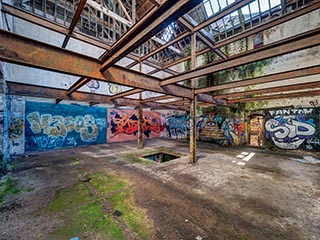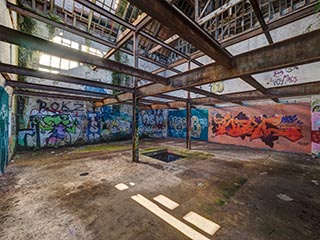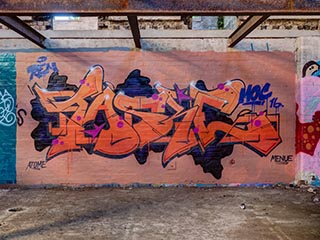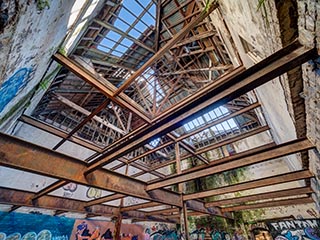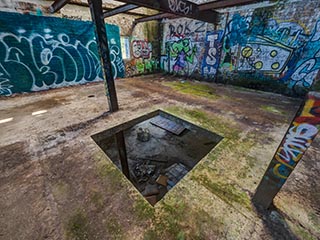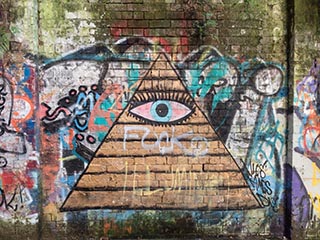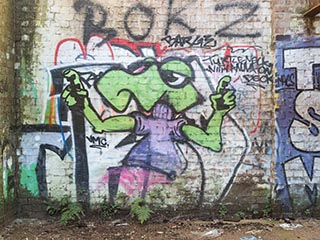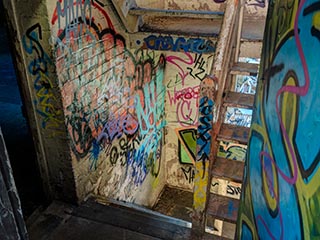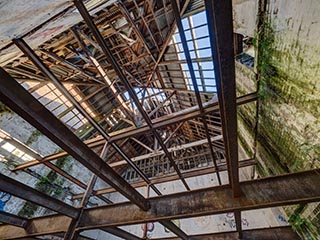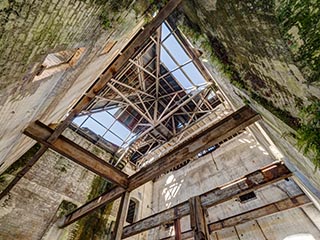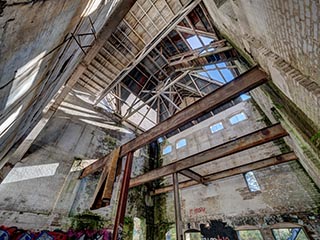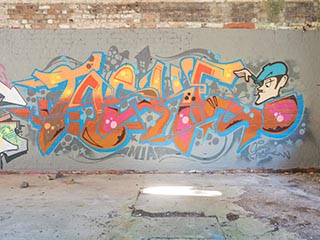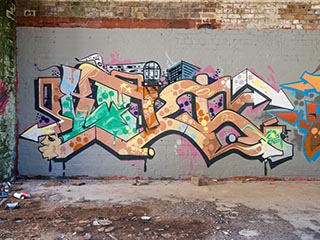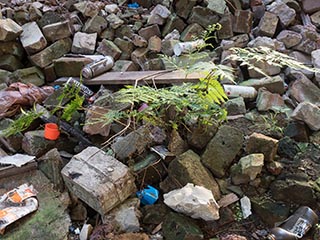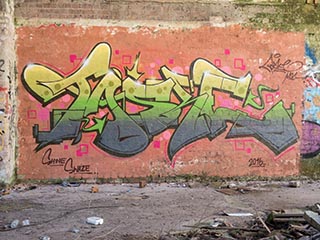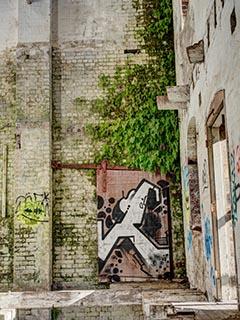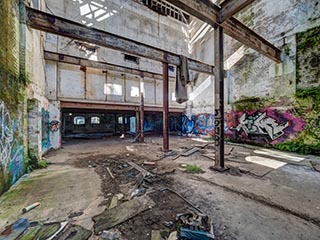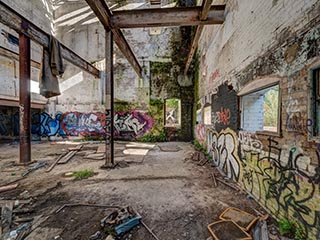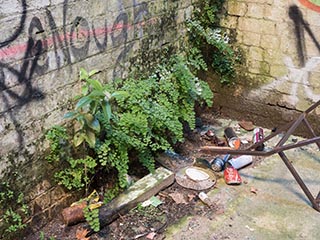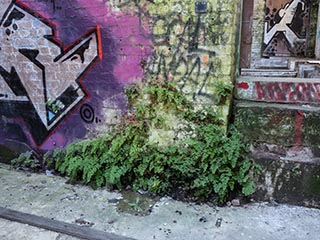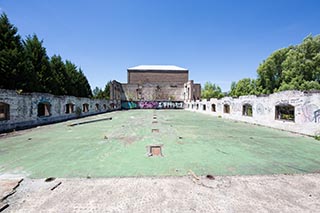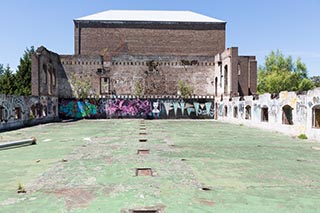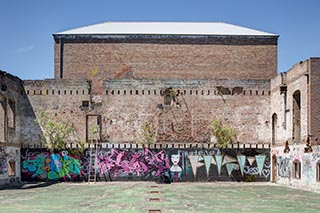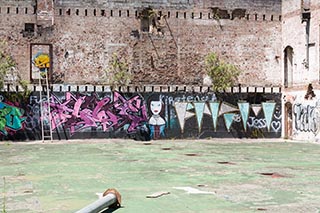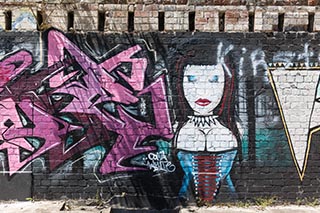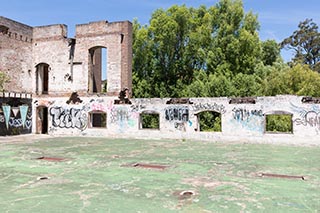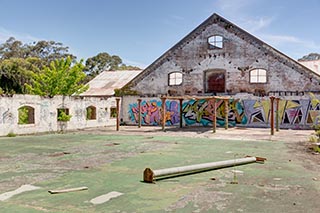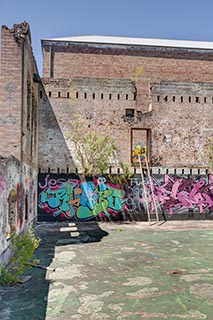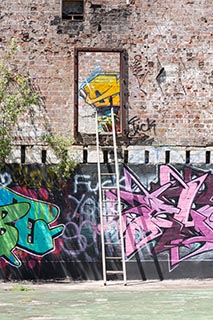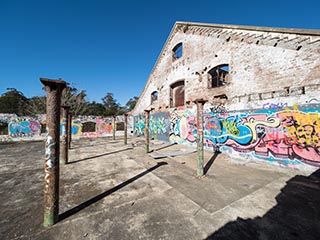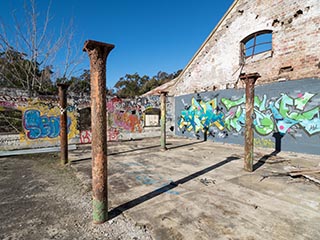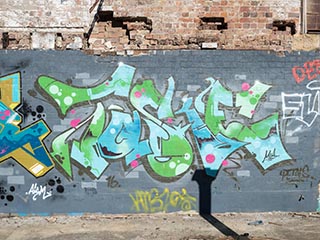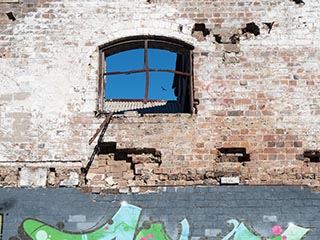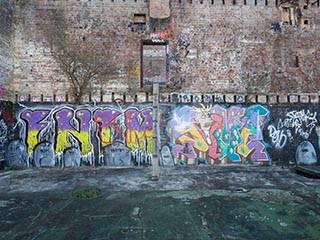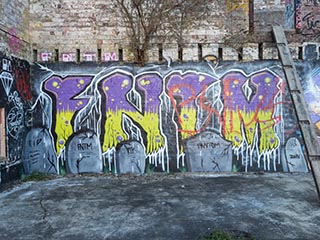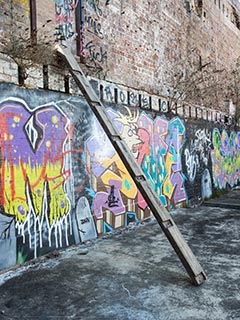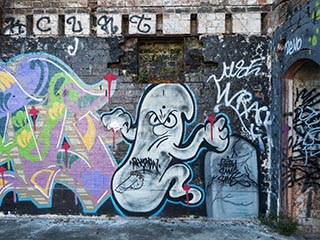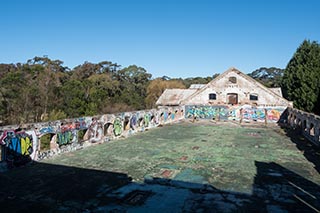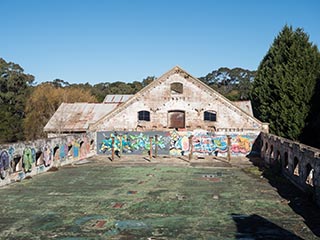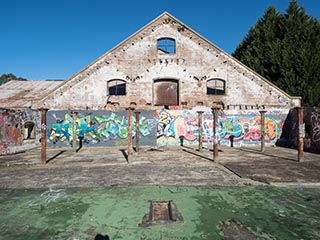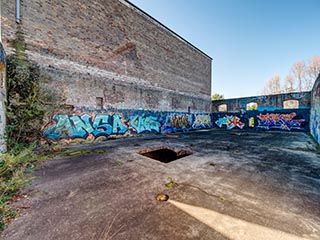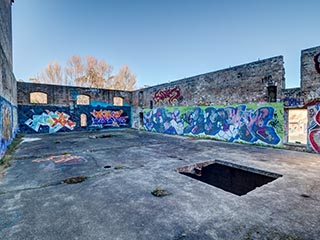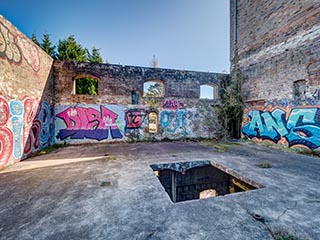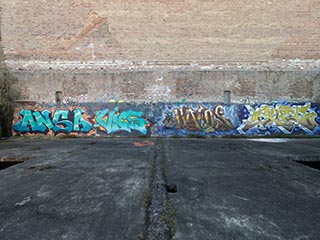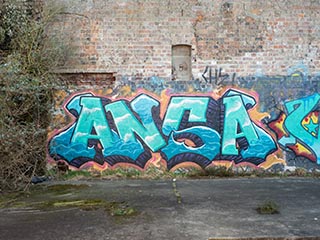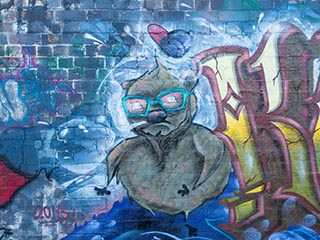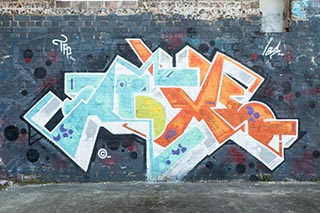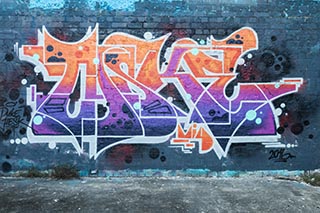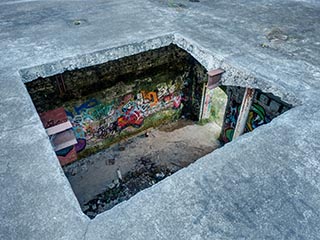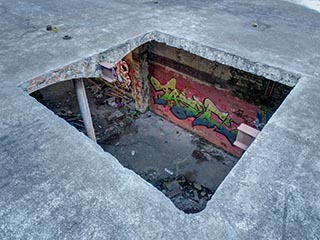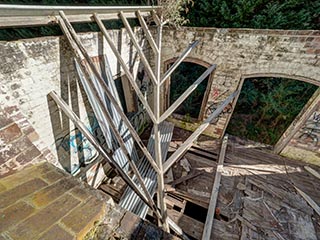This malt house complex in the town of Mittagong, New South Wales once belonged to the now defunct Tooth and Co. brewing company. For many years it turned grain into malt for brewing into beer, but has been abandoned since 1981. It consists of two large brick buildings and some smaller sheds on a large block of land, in the middle of a typical Australian neighbourhood.
I first visited the malt house in December 2013, and returned in July 2016. Abandoned buildings in Australia are usually tightly secured, but not even a token effort had been made to stop people entering this place. The gates were open, and I didn't even see any no trespassing signs. I just parked on the street nearby and strolled right in.
Since interesting and accessible abandoned buildings are such a rarity in Australia, the site has inevitably become well-known and popular with photographers. I met a fellow amateur photographer during my 2013 visit, and in 2016 I lost count of the number of people that I met. I saw two separate model shoots in progress on the same day.
According to this newspaper article someone bought the property in 2000 with plans to convert it into a hotel, brewery, and winery. Thirteen years later the place was still in ruins, so his plans must have fallen through. I saw evidence of relatively recent construction, so apparently some work was done before the project was abandoned.
The steel frame for a staircase has been installed, but it didn't have any steps. Leaving my photographic equipment on the ground floor, I climbed up the frame and had a look around. Unfortunately it was just a big empty expanse, and I didn't think it was worth the effort of carrying up my camera and tripod. The original stairs had all been removed, and I didn't see a way to access the upper storeys.
When I revisited in 2016, I saw a group of teenagers, two boys and a girl, looking out through the big round window in the gable at the end of the building. They greeted me, and we started a conversation. I asked how they managed to get to the top of the building, and they kindly offered to show me the way. I was happy to accept their offer, after briefly returning to my car to swap my large Nikon DSLR and tripod for my far lighter Micro Four-Thirds equipment.
We climbed the incomplete staircase as I had done before, but this time someone had placed a thick wooden beam against one of the walls as a makeshift ramp to the next level. Another staircase, this one with steps, took us up another level. The final stage was to clamber up a wall with only a few gaps in the brickwork for footholds. One of the young people gave me a boost, and I got up without any serious difficulty.
The floorboards were missing in a some places, and some of the other boards were dubious, so I had to carefully crawl along the beams. The building's sturdy wooden frame still looked solid, and I didn't think the place was particularly dangerous as long as I remained alert. However, I am no expert, and with each passing year the structure will grow weaker, so anyone who is considering exploring the place should be extremely careful.
I found this burnt-out house a short distance from the malt houses. It had been surrounded by a chain-link fence, but large sections of the fence had come down. I only took a few exterior shots in 2013, but I had grown more adventurous by my second visit so I explored the remains of the interior.
The two parts of the complex are divided by a small creek. I crossed a small wooden bridge to explore the second building.
The second building was more interesting than the first. Some of the machinery had been left behind, including the remains of a wooden conveyor belt. The staircases, or at least the lower parts of the staircases, had been removed, and I didn't find a way to reach the most of the upper storeys during my 2013 visit. When I returned in 2016, someone had helpfully moved some wooden stairs into place to provide access to the second storey. One of the internal staircases turned out to be intact apart from the ground floor section, so I was able to get to the higher levels and explore most of the building.
I had hoped to explore the building's offices, but I never found them, and eventually had to conclude that they no longer existed. I could see that the floors had been removed from large areas of both buildings, leaving big, empty voids. The offices were probably once housed on these vanished floors.
This area, only one floor above the ground, was the highest level of the second malt house that I managed to explore in 2013. The stairs had been removed, but someone had left a ladder which looked marginally safe enough to use. I managed to carry my equipment up, and was rewarded by this moderately photogenic scene. A rickety ladder with two missing rungs led to a higher level, but I didn't think the possible reward of a few interesting photographs was worth the considerable risk of using it.
When I returned in 2016, there was a new crop of graffiti, including a rather nice graveyard mural. Unfortunately some less artistic people had already started to deface it with juvenile scrawling.
The rickety ladder had been replaced by a sturdy beam, which looked a lot safer, even though there were still some nails sticking out of it. I hammered down the nails as best I could and carefully climbed up the beam, with my tripod and camera bag slung over my shoulders. It led to another open area, which unfortunately turned out to be a dead end. There were two large holes in the middle of the floor, so a moment of inattention could have been fatal, or at least extremely painful.
